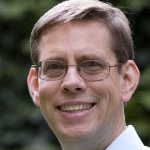Research website Google Scholar
The over-arching theme of my research has been the application of geophysics to environmental and engineering problems, where the target depth is typically the upper hundred meters. Past projects include:
- Using time-lapse electrical resistivity tomography to monitor flow in the hyporheic zone beneath Crabby Creek, a stream near Valley Forge, PA, during the injection of a saline tracer.
- Studying seepage at Mirror Lake, NH, using a resistivity, ground-penetrating radar, and seepage meters.
- A seepage study at Lake Lacawac, PA, using resistivity, ground-penetrating radar, temperature loggers and seepage meters.
- Using resistivity to look at patterns in seepage beneath Burd Run, a stream located near Shippensburg, PA, contrasting periods of high and low discharge in the stream.
- Using ground-penetrating radar to monitor preferential flow in the critical zone.
- Evaluating bridge foundations using electrical resistivity tomography and seismic methods.
I currently have funding from the Pennsylvania Department of Transportation for two different projects. The first involves the evaluation and monitoring of green infrastructure. Renovation of highway I-95 near Philadelphia included installing a series of bioswales designed to manage stormwater runoff, where I am using time-lapse electrical resistivity tomography to monitor infiltration and changes in soil salinity created by road salt runoff. The second project is using joint and full waveform inversion of seismic surface waves to improve evaluation of sinkholes and karst features.
In addition to my geophysical research, I have been active in Temple University administration, having recently completed a five-year term as Director of General Education in the office of the Vice Provost for Undergraduate Studies. I am passionate about using a data-driven approach to improving education, and I continue to be involved in a variety of university assessment projects aimed at improving student success.

